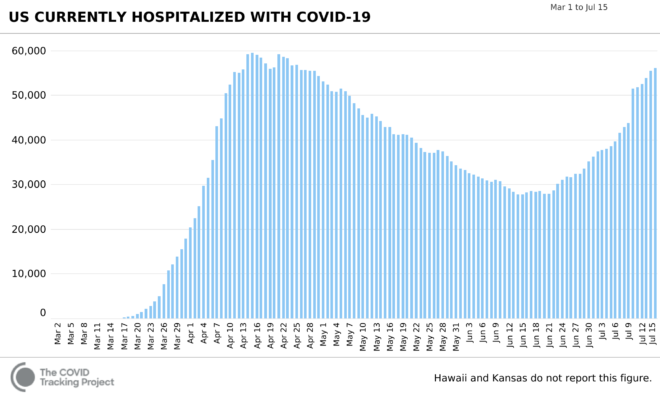Restaurant Employees Await Congressional Unemployment Decision

Although many restaurant owners had trusted government indications that most of the country would be fully operational by now, 22 states have either reversed or paused reopenings altogether. As of July 13, California restaurants must cease sit-down dining service statewide. Nationwide, seated diners yesterday according to OpenTable data are still 64% lower than pre-coronavirus levels.
Hundreds of thousands of restaurant owners who have been unable to safely reopen have been directing their former employees to unemployment (a.k.a. reemployment) programs. This morning, the U.S. Bureau of Labor Statistics reported initial jobless claims in regular state programs of 1.3 million for the week ended July 11. Also this morning, the U.S. Labor Department showed another 17.3 million residents seeking ongoing unemployment benefits for the week ended July 4.
More than 18 million furloughed employees, representing 9% of the 206 million working-age Americans, have relied on a generous stipend called the Federal Pandemic Unemployment Compensation (FPUC), which is $600 added atop any state weekly unemployment benefit.
Approximately $375 billion has been allocated to FPUC. Assuming 10% of FPUC funds were paid to furloughed restaurant workers — restaurants employed one in ten workers prior to the pandemic — then FPUC’s de facto $37 billion benefit to the restaurant industry doubled the $36 billion benefit restaurateurs received from the Paycheck Protection Program.
However, as of July 31, FPUC benefits are scheduled to expire. Moreover, forecasts for full year lost revenue in the restaurant industry are as high as $240 billion.
Nancy Pelosi, U.S. Speaker of the House of Representatives, said on July 14 that she is willing to delay lawmakers’ summer recess in order to work on an extension to unemployment benefits. The U.S. Federal Reserve has already pledged “unlimited” financial asset purchases to sustain market liquidity, increasing its balance sheet from $4.2 trillion in February to $7 trillion as of July 13. However, the Federal Reserve is not allowed to make fiscal stimulus decisions; fiscal decisions are the role of Congress as well as the U.S. Treasury secretary, Steven Mnuchin.
Mnuchin said this week that he “will seriously consider whether we need to put more payments, direct payments that have worked very well.” Importantly, Mnuchin has broad discretionary control over the Treasury General Account, the so-called “America’s Checkbook” which currently has an unprecedented $1.2 trillion balance.
Jobless filings have exceeded one million for 17 consecutive weeks. Prior to the pandemic, jobless filings averaged 210,000 per week.
Nationwide, the unemployment rate is 11.1%. The labor force non-participation rate, which includes workers who have paused applying for jobs, is 38.5%.
Yesterday, the century-old National Restaurant Association sent a letter titled Blueprint for Restaurant Revival to Congress. Its largest request is Congressional approval of the Restaurants Act of 2020, an unprecedented $120 billion fiscal stimulus package dedicated to restaurateurs.
On average, 7,708 Americans die per day. Today, over 773 Americans have died of COVID-19. U.S. deaths from the disease total 135,991. Models suggest coronavirus deaths will exceed 1,000 per day within two weeks.
There are 56,147 patients currently hospitalized for the disease, just 5% below the all-time high of 59,539 coronavirus hospitalizations on April 15.

Graph by The COVID Tracking Project at The Atlantic (CC BY-NC-4.0). Photo by Erik Mclean on Unsplash.

Leave a Reply